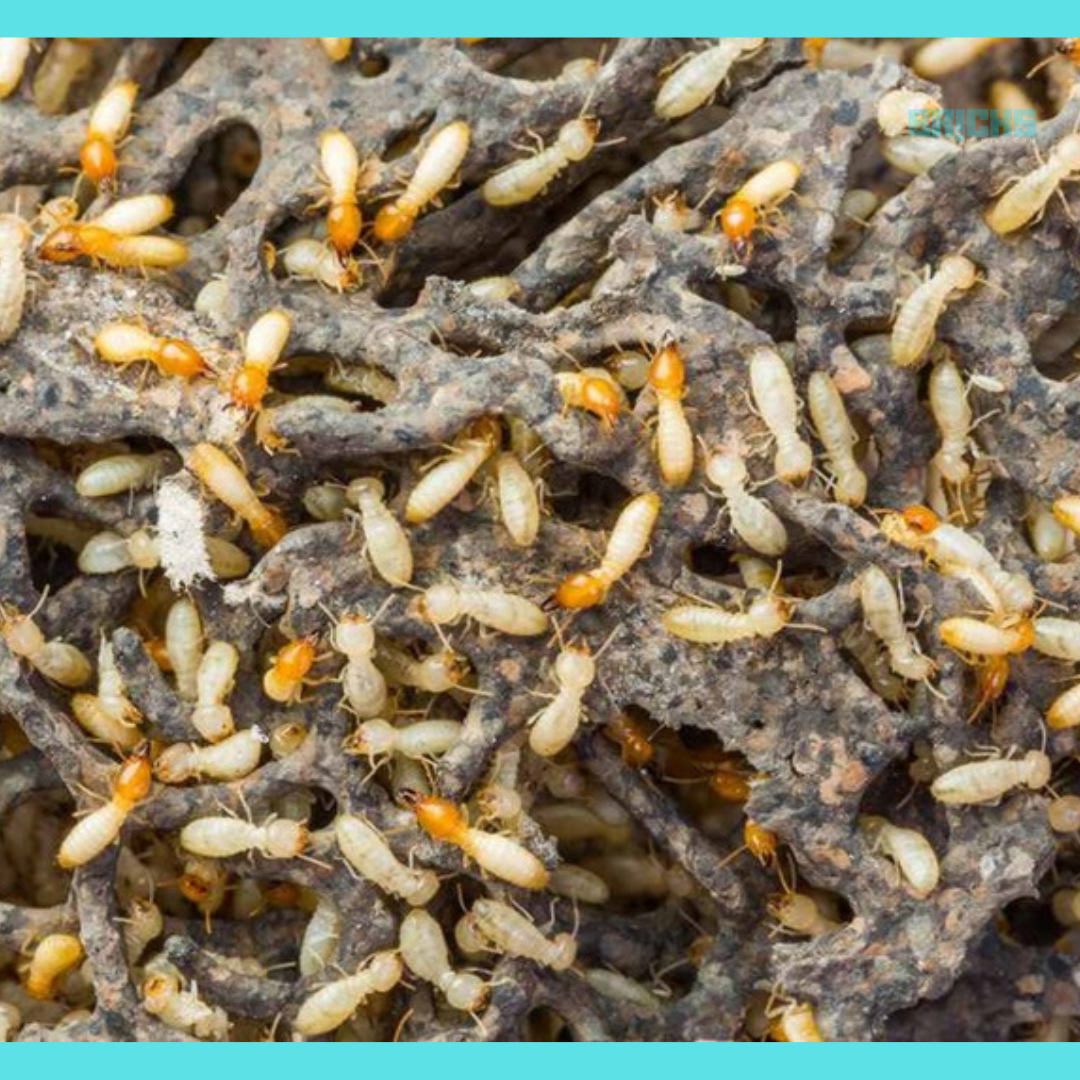Termite infestations are a common problem for most people, causing long-term structural damage to their homes. This damages the house and increases the likelihood of expensive repairs and replacements, even though it is a gradual process that takes time. Early detection of termite infestations is crucial, or prevention is the best course. This blog is about Termites: Treatment, Prevention, and Early Signs.
What are termites?
Termites are little, soft-bodied insects that live in large colonies, much like ants and consume wood. When neglected for an extended period, they can be the most bothersome and unwelcome visitors to the house and harm the furnishings, the structure, and other items.

Early Signs of Termite Infestation
It makes sense to inspect a property for indications of termite infestation routinely. Here are a few dead giveaways that an infestation has entered your house.
Swarmers: Tiny flying insects known as swarmers can arrive in your home. They don’t sting, bite, or eat away at the wood in your house. However, because their wings are visible everywhere, these insects are frequently the first indications of a termite infestation. Their only goal is to procreate and establish new colonies when the swarming season arrives.
Hollow or Blistering Wood: This occurs in places like door frames, deck posts, stairs, and other structural supports where termites can enter the house through wood-to-floor contact. If your property has visible indications of wood damage, you should investigate the area for mould or mildew, indicators of a termite infestation. A definite sign that termites are present in your house is the existence of eaten-away, hollowed-out, or tunneled-out wood.
Frass: Frass is the term for termite droppings. Frass indicates that termites are consuming the woodwork in your house as they dig through it. They dig tunnels and deposit them in your home’s woodwork to remove the excrement from their nests. Usually, there are holes in places where there is evidence of feces. Sadly, frass is frequently overlooked and confused for sawdust or dirt, increasing the infestation and harm these microscopic insects can inflict.

Mud Tubes: Mud tubes have a brown hue and resemble tunnels. They are eight cm thick and are composed of dirt and wood. The soft-bodied termites can move about your house thanks to these mud tunnels, shielding them from predators and dry weather threats. Termites frequently construct these tunnels in plain sight, such as beside door frames, fences, porches, tree trunks, and wall corners.
Windows and Doors That Don’t Close: Termites can raise humidity levels, which makes the frames of windows and doors enlarged and more difficult to open and close. This is particularly true with subterranean termites, which produce more moisture than other species and are known to tunnel. Look for wood damage and feces if you have problems getting your wooden windows and doors to open and close.
Damage to Paint or Wallpaper: Termites are moving behind paint and wallpaper and leaving their droppings behind, as seen by bubbling paint, discolored wallpaper, or the appearance of thin lines.
External Damage: Termites often begin their activity outside and work inside homes. You should act immediately if you notice termite activity outside your house. Early detection will assist in stopping the pests’ future spread and keep the wood from softening.
5 Common Causes of Termite Infestation
By being aware of the typical reasons termites get into your property, you can safeguard it with preventative measures. The following are five specific causes of termite infestations in homes:
Warm and Humid Climate: Termite infestations are more common in homes located in warm and humid climates. Living where these weather patterns exist increases the likelihood that termites may invade your home since it provides the perfect breeding environment.
Moisture in the Home: Termites may be drawn to homes with abundant water in seasons other than the rainy season. Inadequate ventilation, poor drainage, septic system backups, and plumbing issues can also bring on termite infestations in homes.
Gaps and Cracks in the Foundation: Termites love to build their nests beneath the concrete foundation. In pursuit of sustenance, termites will inevitably make their way into your house through crevices and openings, eventually residing in your kitchen cabinets and other areas of the woodwork. The best defence against them and to keep this from happening is to seal the holes and fissures.
Keep Wood Out of the House: Termites are drawn to wood, so keeping wood within your house will only encourage them to settle there. Store any waste wood, including dead branches and bushes, mulch for the garden, and leftover firewood, away from the house to keep them out.
Location: Occasionally, a termite infestation on your property may occur despite all of your preventative measures just because of its physical location. Even if homeowners know the problem and take precautions to prevent it, termite infestations occur in some places with high humidity and intense monsoons.
How to Prevent / Control Termite Infestation
Preventing termite infestations in your house is essential to minimizing structural damage. Here are some easy steps to keep termites out of your home.
• Frequent Inspections: As termites typically infiltrate during the monsoon and after spring, make it a habit to perform routine inspections every few months. And take charge of your house. Mold and mildew appear during the wet season, and swarmers increase in the spring.
• Lower Moisture Levels: Since termites like moist, high-humidity conditions, sealing leaks in the house and keeping enough ventilation might be a barrier.
• Wood Storage: To keep termites from getting too close and into the house, store any unused wood outside the home, such as in a separate garden shed or storage room.
• Termite-resistant Construction: Using termite-resistant building materials during the construction of your home, such as treated lumber, termite shields, concrete, or stone, will pay off in the long run.
- Expert Termite Management: Hiring a pest control expert is the best way to guarantee that your house stays clear of termites. These experts employ techniques, including liquid termiticides, baiting systems, wood treatment, and fumigation, to remove termites from your property and protect it from structural damage, depending on the infestation type and the degree of damage.
• DIY Termite Control: You can use moist cardboard traps to attract termites and get rid of them or apply boric acid to the home’s wooden structures to attract and eliminate termites.

Conclusion to Termites: Treatment and Prevention
A termite infestation shortens the home’s lifespan and lowers its market value, in addition to causing structural damage. You can save yourself a great deal of hassle and expense and maintain the aesthetic appeal and condition of the woodwork in your home by ensuring that you perform routine termite inspections and take preventative measures to save your home from termites.
Also Read: Discover Unparalleled Luxury Living: Elegant Residential Projects in Nagpur
Similar Topics: Mivan Construction Technology















